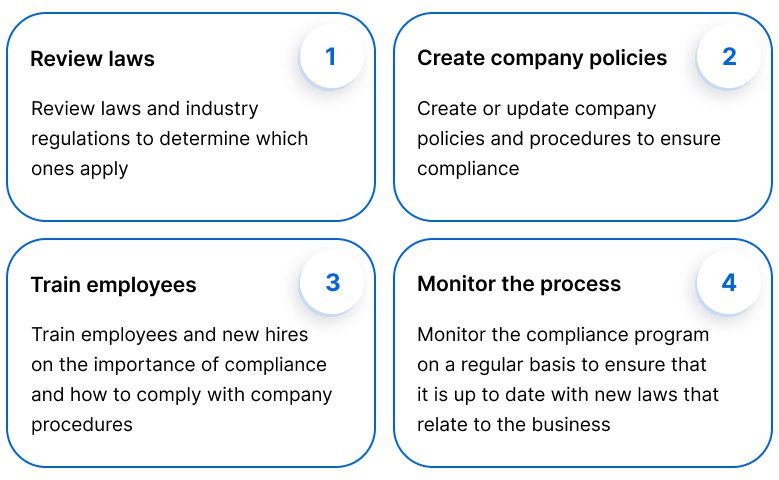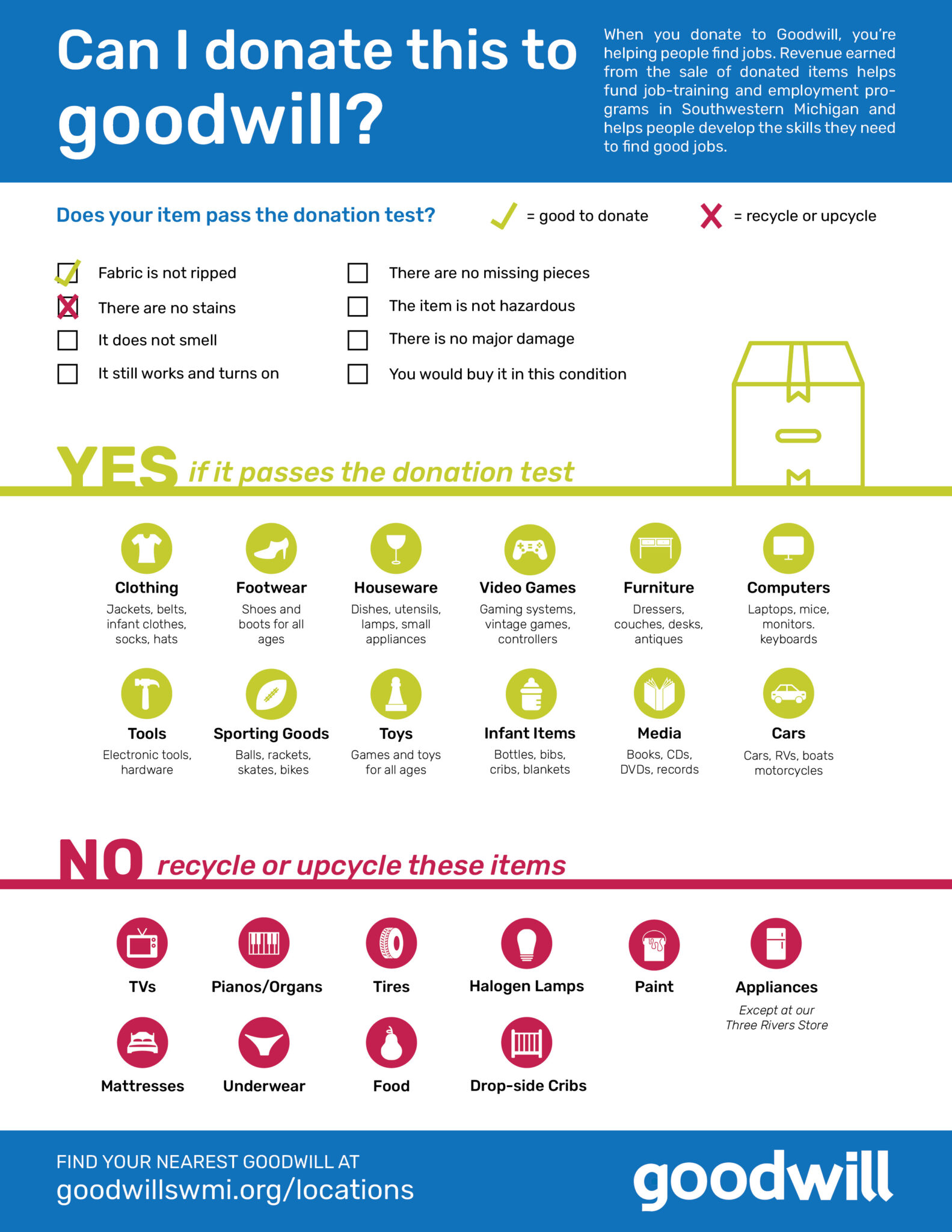Creating Your Own Tropical Paradise: A Guide to Designing a Tropical Garden
Tropical gardens are an oasis of natural beauty, vibrant colors, and lush vegetation that transport us to sun-drenched locales. The key to achieving this paradisiacal aesthetic lies in the thoughtful design of your tropical garden. Whether you’re starting from scratch or looking to enhance an existing outdoor space, this comprehensive guide will provide you with all the information you need to craft your own beautiful tropical retreat.
Table of Contents
Understanding Tropical Garden Design
Designing a tropical garden goes beyond merely selecting plants; it’s about creating a harmonious and inviting environment that mimics the rich ecosystems found in tropical regions. A successful tropical garden should evoke a sense of relaxation and leisure, reminiscent of the paradise islands. Before diving into the details, let’s explore the core elements that define tropical gardens.
Key Elements of a Tropical Garden
- Lush Planting: Tropical gardens are characterized by dense foliage, layering, and a variety of plant shapes and textures. Evergreen trees, large-leaved plants, and colorful blooms are essential for achieving the desired effect.
- Bold Colors: Fill your garden with vibrant colors found in tropical flowers such as hibiscus, plumeria, bird of paradise, and orchids. Use contrasting colors to create visual excitement.
- Water Features: Incorporating water elements, such as ponds, fountains, or waterfalls, enhances the charm of a tropical garden. These features also attract wildlife and provide soothing sounds.
- Natural Pathways: Meandering paths made from natural materials like stones, wood mulch, or gravel encourage exploration and add to the organic feel of the space.
- Relaxation Areas: Create spaces for relaxation by incorporating seating areas that harmonize with nature. Use natural materials such as bamboo or wicker for furniture selections.
Choosing the Right Location
When it comes to designing a tropical garden, location is everything. Understanding your site’s climate, light, and soil conditions is crucial to the success of your garden.
Site Assessment
- Climate: Evaluate your climate and ensure it is suitable for the tropical plants you wish to include. Most tropical plants require a warm climate with minimal frost.
- Sunlight: Identify sunny areas that receive at least six hours of direct sunlight daily. Some plants thrive in shaded areas, so be mindful of the specific requirements for your selections.
- Soil Quality: Tropical plants often prefer well-drained, nutrient-rich soil. Conduct a soil test to determine necessary amendments, such as compost or organic fertilizers.
Designing Your Layout
The layout of your tropical garden is crucial for creating depth and visual interest. Here are some tips to design your space effectively:
- Create a Focal Point: Incorporate a striking element such as a large palm tree, a sculpture, or a water feature at the center of your garden to draw attention.
- Layer Planting: Utilize different plant heights to create layers. Place taller plants like palms and bamboo towards the back and shorter flowering plants or ground covers in the front.
- Use Curved Lines: Instead of straight lines, opt for curved flower beds, pathways, and borders to mimic the organic shapes found in nature.
Selecting the Right Plants
Choosing the right plants is fundamental to achieving that tropical paradise look. Here are some popular choices for various plant categories:
Trees and Tall Plants
- Coconut Palm (Cocos nucifera): An iconic tropical tree perfect for providing shade and ambiance.
- Bamboo: Fast-growing and versatile; it adds height and a lush aesthetic to your garden.
- Royal Palm (Roystonea regia): Majestic trees that can reach impressive heights, providing an elegant touch.
Large Foliage Plants
- Philodendron: Known for its dramatic leaves, this plant thrives in shady spots and enhances tropical vibes.
- Banana Plant (Musa): Adds a tropical feel with its enormous leaves, and you may even yield bananas.
- Alocasia: With its striking leaf shapes, it can serve as a focal point in shaded areas.
Flowering Plants
- Hibiscus: Known for their large, colorful blooms, these flowers are synonymous with tropical landscapes.
- Bird of Paradise (Strelitzia reginae): The striking resemblance to a tropical bird makes it a showstopper in any garden.
- Plumeria: Famous for their sweet fragrance and stunning blooms, plumeria will enchant visitors.
Incorporating Hardscaping Elements
A successful tropical garden isn’t just about plants; hardscape elements play an essential role in creating defined spaces and a cohesive look. Here are some suggestions:
Paving and Pathways
Using natural materials like stone, brick, or pebbles can help create inviting pathways throughout your garden. The winding nature of the paths should encourage exploration and provide opportunities for rest stops along the way. Consider integrating wooden or bamboo borders to enhance the tropical feel.
Outdoor Living Spaces
Design outdoor living spaces to maximize relaxation and enjoyment:
- Seating Areas: Create comfortable seating with natural materials that blend with the environment. Consider hammocks or outdoor lounges for an earthy touch.
- Shade Structures: Use pergolas or thatched roofs to provide shade and comfort. These structures can serve as focal points while protecting you from direct sunlight.
Water Features: Encouraging Tranquility and Wildlife
Water features are essential for a tropical garden as they create a peaceful ambiance and attract wildlife.
Types of Water Features
- Ponds: A pond can host various aquatic plants and animals, adding to the biodiversity of your garden. Consider adding fish to bring the ecosystem to life.
- Fountains: Fountains can serve as a focal point while providing soothing sounds of flowing water, enhancing relaxation.
- Streams or Dry Riverbeds: Mimicking a natural stream with stones and gravel adds texture and structure to your garden.
Maintaining Your Tropical Garden
Once your tropical garden is designed and planted, it’s important to keep it healthy and thriving. Here are some maintenance tips:
Watering Strategies
Tropical plants generally require regular moisture. Ensure your garden is watered consistently, particularly during dry spells. Drip irrigation systems can provide a steady, efficient water supply.
Fertilization
Using organic fertilizers will promote healthy growth. Aim to fertilize your plants every few months during the growing season for optimal results.
Pest Management
Keeping tropical plants healthy can be challenging due to pests. Regular irrigation and maintaining good garden hygiene help prevent infestations. Consider natural pest control methods, such as introducing beneficial insects.
Conclusion
Designing a tropical garden allows you to create a stunning outdoor space that you’ll cherish for years to come. By understanding the key elements of tropical design, choosing the right location, selecting the right plants, and incorporating hardscaping and water features, you can turn your garden into a serene sanctuary that echoes the allure of tropical locales.
With the right vision and a bit of patience, your own tropical paradise awaits just outside your door. So, grab your gardening gloves, and embark on this rewarding journey to craft an oasis that captivates and relaxes. The vibrant colors, soothing sounds of flowing water, and lush greenery will be a feast for your senses and a gift to your spirit. Happy gardening!
What are the essential elements needed to create a tropical garden?
To create a tropical garden, you need to focus on a few essential elements: foliage, color, and water. Start with selecting a variety of tropical plants that feature large, luscious leaves and vibrant blooms. Plants such as hibiscus, bird of paradise, and philodendrons are excellent choices that embody the tropical aesthetic. Incorporating different heights among your plants can create a lush and layered effect, making your garden feel more abundant.
Water features are also a crucial aspect of tropical gardens. Whether it’s a small pond, a fountain, or a simple birdbath, adding water elements not only attracts wildlife but also plays a key role in the overall atmosphere. These features can enhance the tropical vibe by creating soothing sounds and reflections, thus making your space more inviting and serene.
How do I choose the right plants for my tropical garden?
Choosing the right plants for your tropical garden involves considering your local climate, sunlight exposure, and soil type. Research which tropical plants thrive in your area, as not all tropical species will be suitable for every environment. Native plants are often more resilient and require less maintenance, so look for local nurseries or gardening centers that specialize in tropical varieties.
Additionally, think about the layout and design of your garden. Use a mix of tall, medium, and low-growing plants to create depth and interest. Incorporating flowering plants alongside lush green foliage can provide dynamic contrasts, while also offering year-round beauty. Don’t hesitate to experiment with different combinations and arrangements to achieve the desired tropical effect.
Can I grow tropical plants in non-tropical climates?
Yes, you can grow tropical plants in non-tropical climates, but it requires extra care and consideration. Many tropical plants can be grown as annuals, meaning they complete their life cycle in one season, or you can try growing them in pots. Container gardening allows you to move plants indoors during colder months, providing them with a controlled environment that mimics their native conditions.
If you’re determined to create a perennial tropical garden in a temperate climate, consider investing in climate-friendly options or hardy hybrids that tolerate cooler temperatures. Additionally, using protective measures such as planting in microclimates, utilizing greenhouses, or adding heating mats can help you maintain the necessary warmth for your plants to flourish.
What kind of soil is best for a tropical garden?
Tropical plants generally prefer well-draining, nutrient-rich soil that retains moisture without becoming waterlogged. A good option is to combine existing soil with organic matter such as compost or well-rotted manure. This not only improves drainage but also increases the nutrient content, facilitating growth. Consider using a soil mix designed for tropical plants, often available at gardening centers.
In addition, regular soil testing can help you determine pH levels and nutrient deficiencies, allowing for necessary amendments. Always remember to mulch around your plants to help retain soil moisture and regulate temperature. This also reduces weed competition, ensuring your tropical plants have the best conditions to thrive.
How much sunlight do tropical gardens need?
Tropical gardens typically thrive in full to partial sunlight, depending on the specific plants you choose. Most tropical plants prefer at least six hours of direct sunlight each day. However, some species can tolerate shadier areas, making it essential to select plants according to the sunlight conditions in different parts of your garden. Observe how sunlight moves across your garden space throughout the day to make informed choices.
It’s also important to note that while tropical plants love heat and light, excessive exposure can cause leaf scorch. Strategically placing taller plants to provide afternoon shade to smaller, more sensitive plants can create a balanced environment that meets varying light needs. Adjusting your plant placement and arrangement can help you maintain a picturesque and healthful tropical garden.
How do I maintain a tropical garden?
Maintenance of a tropical garden involves regular watering, pruning, and monitoring for pests. Tropical plants typically require more frequent watering due to their lush foliage and warm growing conditions. Drip irrigation systems or soaker hoses can be beneficial for providing consistent moisture, particularly during hotter months. Be sure to water early in the day or late in the afternoon to minimize evaporation and fungal issues.
Regular pruning and deadheading promote healthy growth and prevent overcrowding among plants. Keep an eye out for pests, as tropical plants can be susceptible to certain insects. Implementing organic pest control methods, such as introducing beneficial insects or using neem oil, can help maintain a healthy garden ecosystem without harmful chemicals.
What design tips can help enhance my tropical garden?
To enhance your tropical garden’s design, consider creating zones or areas within your space. Use pathways, stones, or different grass types to delineate these areas and give visitors a sense of discovery as they explore. Incorporating features like hammocks, seating areas, or outdoor décor enhances the atmosphere, making it feel even more like a tropical oasis.
Color is another crucial element in a tropical garden design. Choose plants with contrasting colors, and consider adding decorative items such as brightly colored pots, sculptures, or outdoor furniture that complements your lush surroundings. Additionally, incorporating various textures through foliage and hardscaping materials can create a visually stimulating environment, capturing the true essence of a tropical paradise.
How to Design a Tropical Paradise in Your Own Backyard
Wondering how to make your garden look and feel more tropical? We’re sharing ten ideas for tropical garden design elements plus handy lists of heat and humidity tolerant annuals, perennials and shrubs in this fun article.
Contributors: Susan Martin
PLANTS THAT THRIVE IN HEAT AND HUMIDITY:
We would all love to take a tropical paradise vacation, but if hopping on a plane to Hawaii isn’t in your near future, consider designing your own tropical garden right at home. Tropical-themed gardens can be grown in any region of the country by adapting the plant palette to fit a few key themes which we’ll show you below.
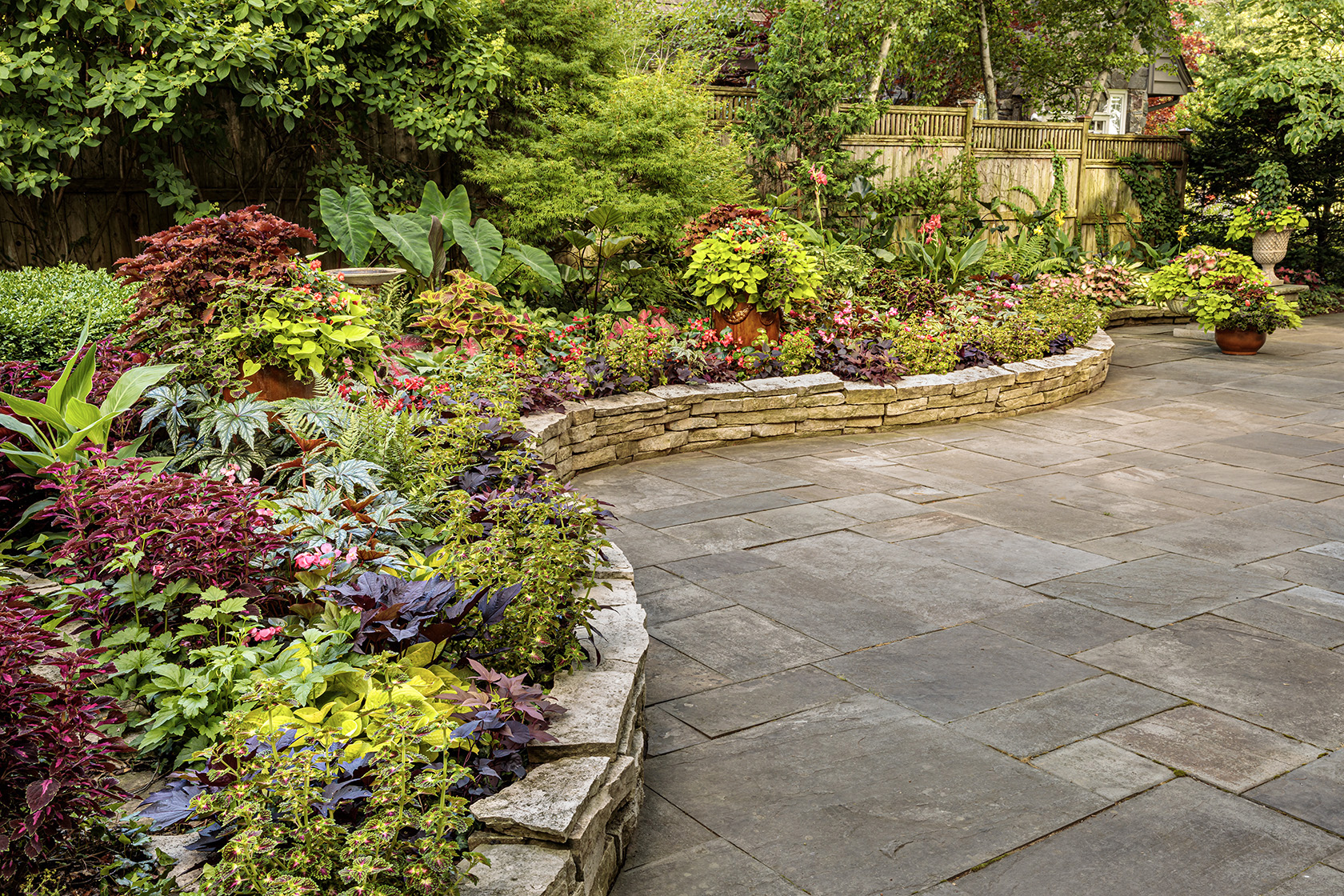
Cultural Considerations for a Tropical Garden
Before you begin, there are a couple of cultural considerations to keep in mind when trying to make your garden look and feel more tropical.
First, tropical plants thrive in warm, humid conditions. If you live in a cooler climate, wait until after your last frost date to plant your tropical garden. In warmer areas, some tropical plants can grow nearly year-round.
Second, many tropical looking plants don’t just crave humid air — they also want the soil to be consistently moist. Site your tropical garden near the hose or sprinklers, or plan to use self-watering AquaPots ® or WaterWise ® drip irrigation to keep your plants happy.
Ten Common Elements of Tropical Gardens
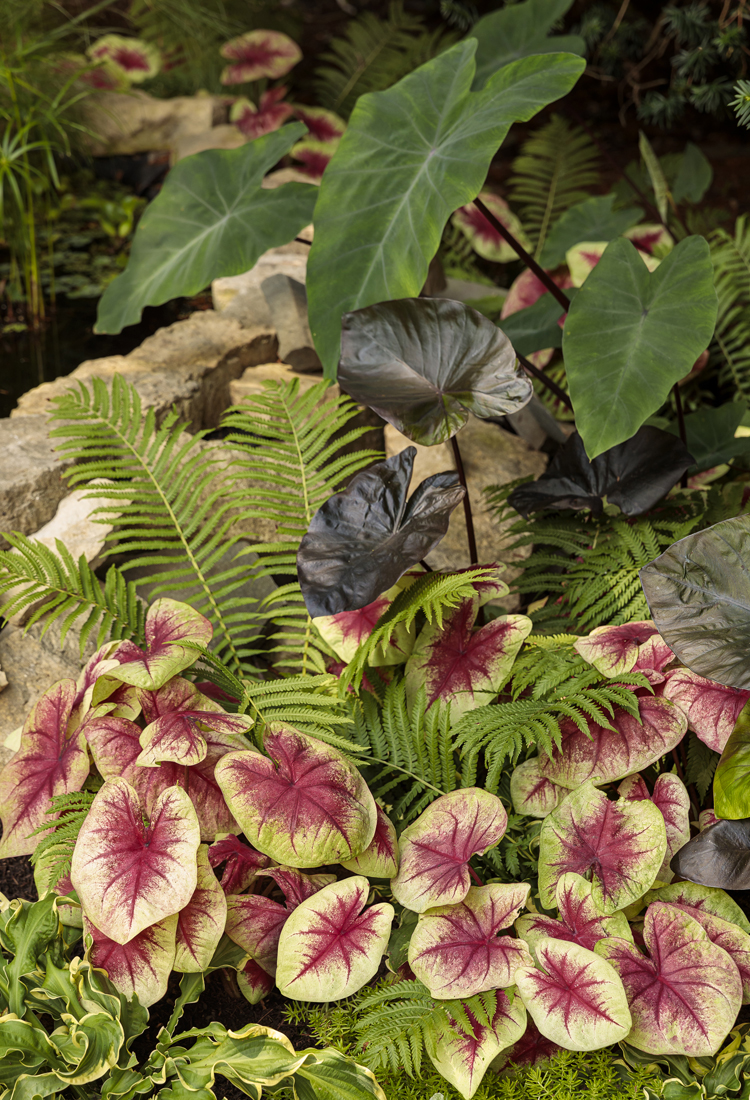

Bold, flamboyant foliage, as well as an exuberant mix of textures, leaf sizes and shapes are the hallmark of a tropical-themed garden. Think of what you might see if you walked around a park in Florida. Understory plants with broad, bold leaves like caladiums receive relief from the hot sun by the tall trees and swaying palms overhead.
You can create a similar look in your own tropical garden by creating layers like you see in these photos. Your shade may not come from palm trees, but a colorful patio umbrella or towering oak can be just as effective. Get lots of ideas for incorporating Proven Winners tropical garden plants.
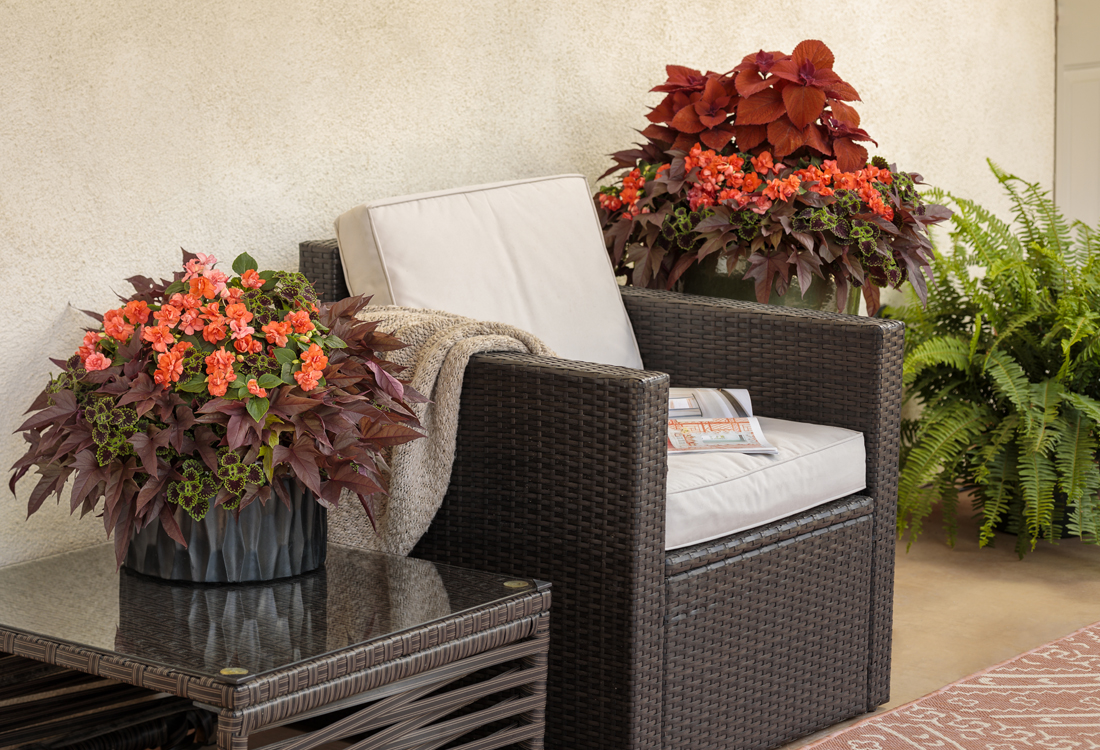
Part of the appeal of tropical gardens is their jungle-like atmosphere which transports us mentally to a more tranquil, oxygen-rich space. Surrounding yourself with plants, whether you use pots on your patio or garden beds filled with fantastic foliage and flowers, is a key element of making your garden feel more tropical. Imagine resting in this chair, surrounded by gorgeous plants (featured is our Brick Road recipe), looking out into your flourishing garden. Can’t you just feel the day’s stresses melting away?
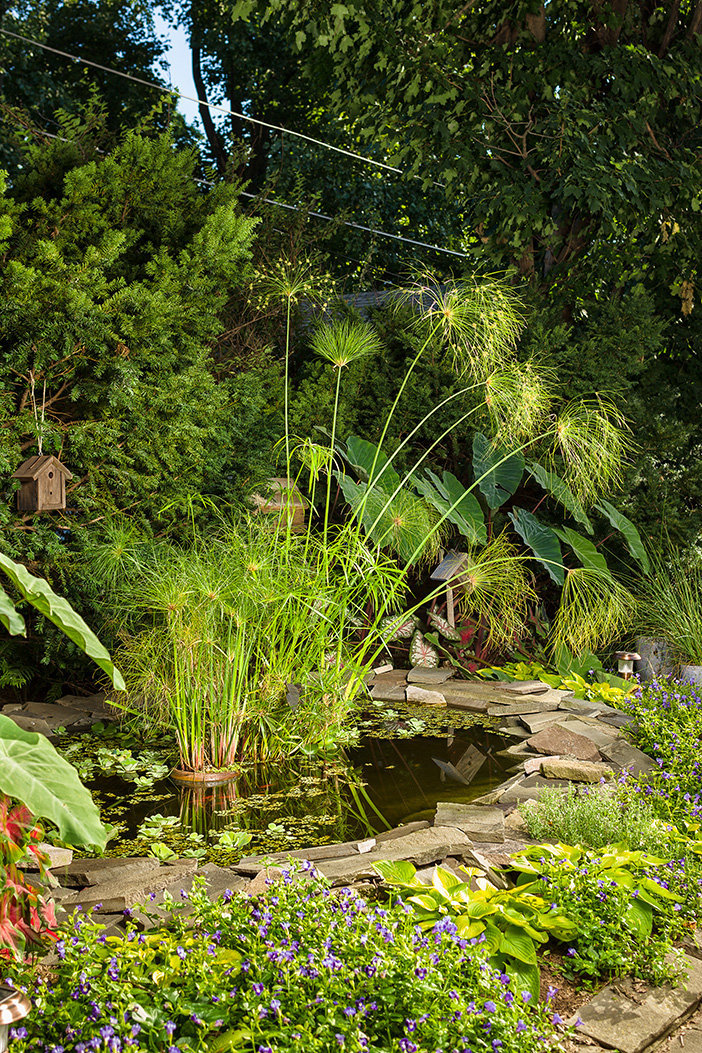
Water is an essential element of every tropical garden. If you imagine walking through a rainforest, the sound of raindrops or a trickling stream would have an instant calming, cooling effect. The same is true of the backyard tropical oasis you are creating. Water features can be as small as a tabletop fountain, as grand as a large pond with a waterfall, or anything in between. In this picture, tall King Tut ® and Prince Tut ® papyrus grasses are thriving in a small pre-cast pond. Their large, airy plumes sway in the slightest breeze. If you need to mask the noise of neighbors or traffic, consider installing a water feature with running water.
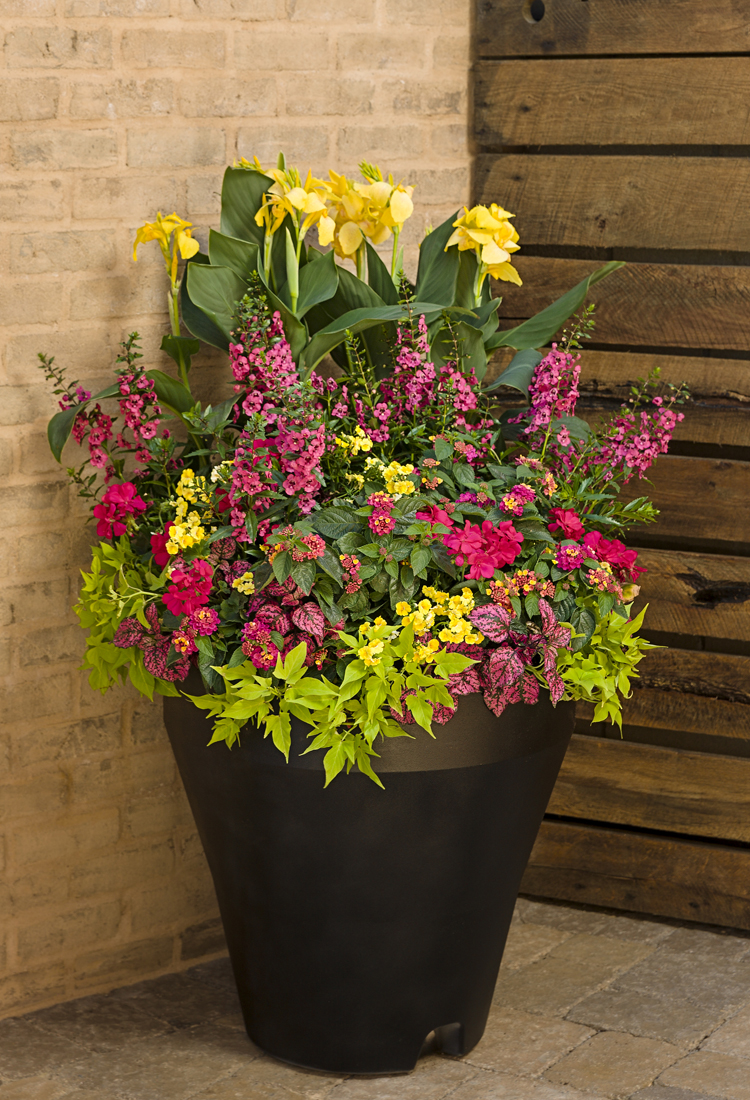
One of the ways to create the lush atmosphere of a tropical garden is to use oversized containers in your outdoor living areas. Abundance is a key element of this garden style. Choose containers that are at least 18” in diameter and fill them to the hilt with boldly colored and textured plants. In this container, we used: Toucan ® Yellow cannas, Angelface ® Perfectly Pink angelonia, Boldly ® Hot Pink geraniums, Luscious ® Royale Cosmo lantana, Hippo ® Rose polka dot plants, Sunsatia ® Lemon nemesia and Sweet Caroline Light Green sweet potato vine.
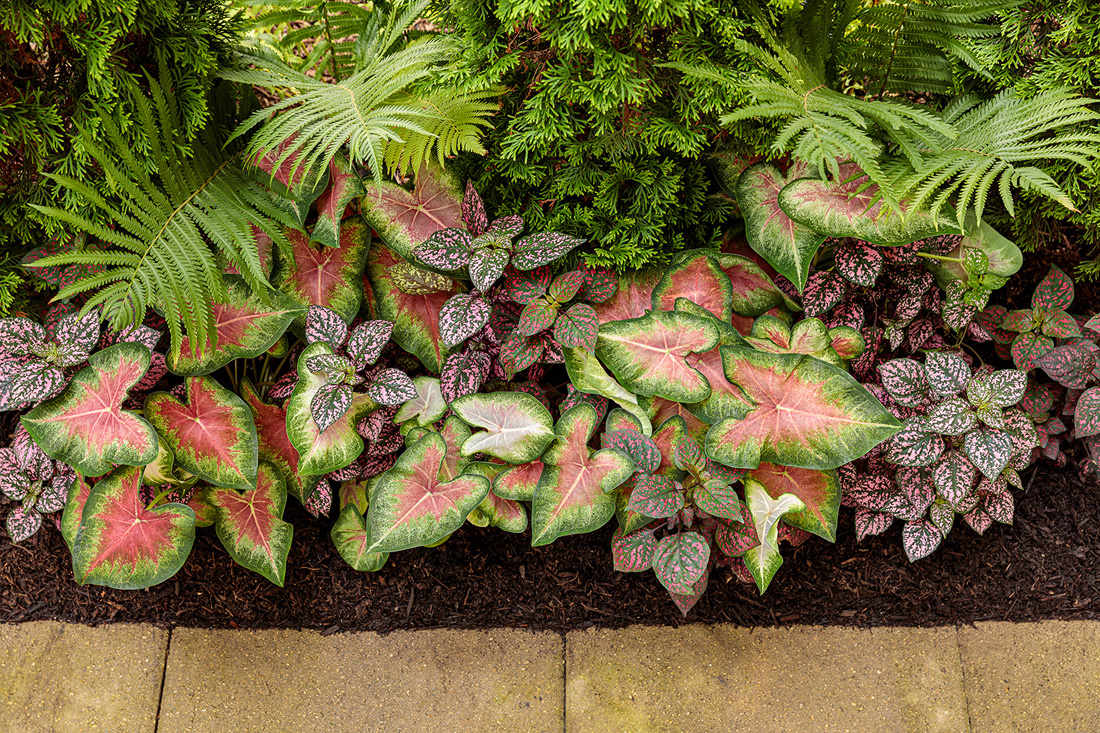
- Dot a few tropicals in and around the garden.
If going big with extra-large containers isn’t in your budget, consider adding a few tropical plants in key places that you tend to view or pass by often. In this picture, Heart to Heart ® ‘Rose Glow’ caladiums and Hippo ® Rose polka dot plants were planted in front of an arborvitae hedge that borders an outdoor seating area so they could be enjoyed each time the homeowner was relaxing outside. If you can only plant a few, be especially mindful of choosing plants that have instant impact with their bold foliage or vibrant flowers.
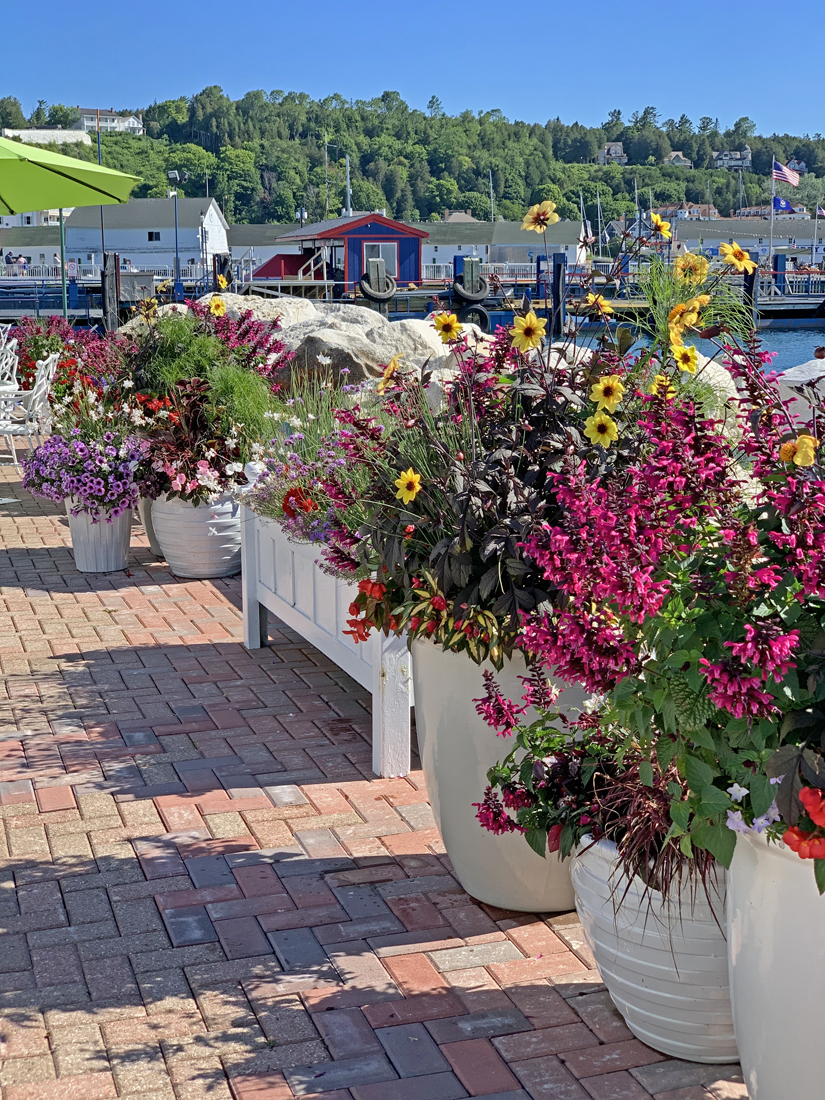
Photo courtesy of Jack Barnwell Design.
- Consider using self-watering containers.
Remember how we mentioned that many tropical-looking plants need consistently moist soil to thrive? Spend less time watering and more time enjoying your tropical oasis garden by using self-watering planters. We especially like AquaPots ® for their amazingly high quality glazed ceramic finishes and super functional self-watering system. If you’ve never used self-watering containers before, you may be surprised how much better your plants will perform when they have consistent access to moisture. Add a few scoops of continuous release plant food into the water reservoir and your plants will be fed on a consistent basis too.

Have you ever noticed that many of the most iconic tropical plants like hibiscus, cannas, crotons and bromeliads all bloom or have decorative foliage in warm colors like red, pink, magenta, orange and sunshine yellow? Cool blue tones tend to come from natural elements like the ocean or sky instead of from flowers in a tropical garden. When choosing plants for your design, focus on those that fit a warm color palette. You can even paint your containers to match. In this picture, we enhanced plain wood flower boxes with tangerine orange paint suitable for outdoor use.

Photo courtesy of Norman Winter.
- Bring in the hummingbirds and butterflies.
What could be more beautiful and relaxing in your tropical garden than watching butterflies and hummingbirds? Choose the blooms they can’t resist like Vermillionaire ® cuphea (pictured), Rockin’ ® Fuchsia salvia and Sunstar ® pentas to enjoy the show all summer long. Hummingbirds especially like these plants with red flowers. And you’ll find even more ideas here. You will draw more pollinators if you group the plants they like together in one area. It makes feeding more efficient — think buffet v. a la carte menu.
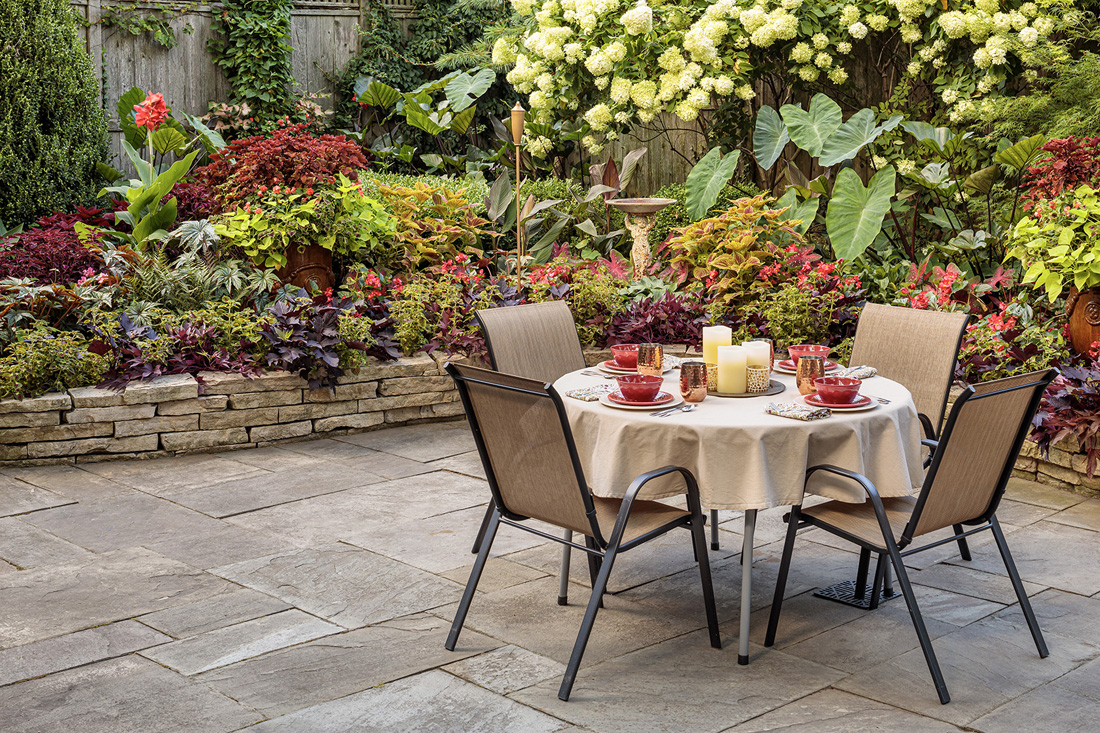
Dining oceanside in Santa Barbara would be dreamy, but if that’s not likely to happen anytime soon, bring the beauty of the tropics right to your own outdoor seating area. You can reap the same health and well-being benefits of going on vacation but only have to travel out your back door. Better yet, you can do it every day! In this scene, this homeowner chose to grow all of her tropical plants and flowering annuals up close around her patio rather than further out in the landscape so she could feel the tranquility of being immersed in a tropical garden as she dined outdoors.
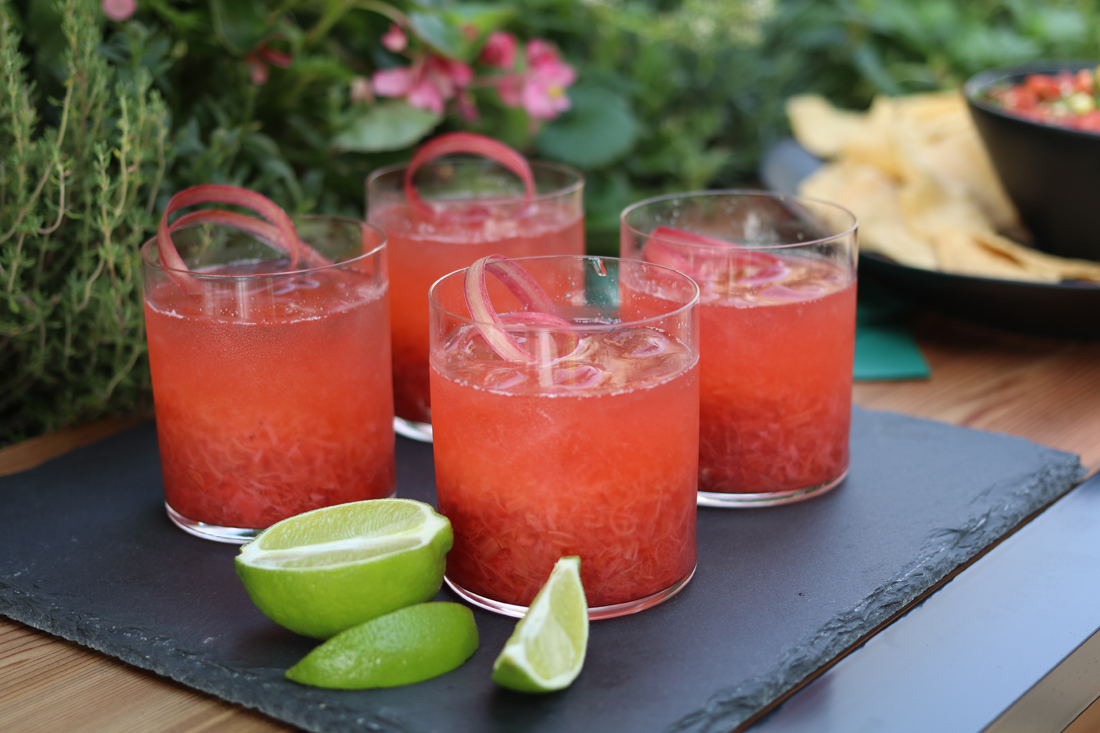
Cap off the tropical experience by serving fruity drinks in the garden that are made from ingredients you grew yourself. Better yet, serve them in a coconut with a little paper umbrella! Find the recipe for the strawberry rhubarb margarita shown above plus several more summer fresh dishes here.
https://greatgardenplans.com/how-to-design-a-tropical-garden/https://www.provenwinners.com/learn/finding-right-plant/how-design-tropical-paradise-your-own-backyard

